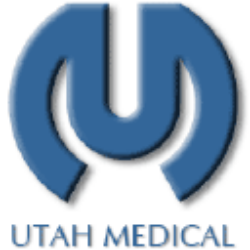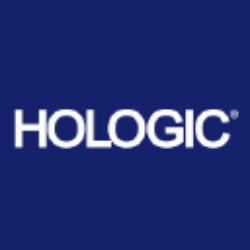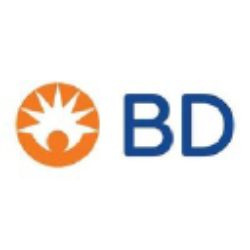LMAT

LeMaitre Vascular, Inc.
LMAT
(3.5)92,14 USD
14.58% ROA
13.15% ROE
53.87x PER
2.030.954.832,00 USD
5.76% DER
0.69% Yield
19.4% NPM
LeMaitre Vascular, Inc. Stock Analysis
LeMaitre Vascular, Inc. Fundamental Analysis
Fundamental analysis in stock investing is like studying the foundation of a house before buying it. It involves looking at a company's financial health, like its earnings, assets, and debts, to determine if it's a good investment based on its fundamental strength and potential for growth.
| # | Analysis | Rating |
|---|---|---|
| 1 |
ROA
The stock's ability to make a lot of money from its assets shows that it is very profitable, making it a good choice for people who want to invest and make a lot of money. |
|
| 2 |
DER
The stock has a minimal amount of debt (6%) relative to its ownership, showcasing a strong financial position and lower risk for investors. |
|
| 3 |
Revenue Growth
With a track record of consistent revenue growth in the past five years, this company presents a compelling opportunity. |
|
| 4 |
Assets Growth
With continuous growth in revenue over the last five years, this company has proven to be a lucrative investment option, showcasing its strong financial performance. |
|
| 5 |
Dividend Growth
The company's dividend growth has exhibited a remarkable upward trend over the past five years, consistently delivering higher returns to investors. |
|
| 6 |
Dividend
With a solid track record of dividend payments over the past five years, the company has established itself as a dependable choice for investors seeking consistent income. |
|
| 7 |
Buffet Intrinsic Value
Warren Buffett's formula suggests that the company's stock is undervalued (424), making it an appealing investment prospect with its intrinsic value surpassing the current market price. |
|
| 8 |
ROE
The stock's ROE falls within an average range (9.28%), demonstrating satisfactory profitability and efficiency in utilizing shareholders' equity. |
|
| 9 |
PBV
The stock's high Price-to-Book Value (P/BV) ratio (4.16x) suggests it's overvalued, potentially making it an expensive investment. |
|
| 10 |
Net Profit Growth
The net profit of this company has shown no signs of growth over the last five years, suggesting limited profitability and making it a less attractive investment opportunity. |
|
| 11 |
Graham Number
The Graham number of this company suggests that its stock price may be overvalued, indicating a less favorable investment opportunity. |
LeMaitre Vascular, Inc. Technical Analysis
Technical analysis in stock investing is like reading the patterns on a weather map to predict future weather conditions. It involves studying past stock price movements and trading volumes to make predictions about where a stock's price might go next, without necessarily looking at the company's financial health.
| # | Analysis | Recommendation |
|---|---|---|
| 1 | Awesome Oscillator | Hold |
| 2 | MACD | Buy |
| 3 | RSI | Hold |
| 4 | Stoch RSI | Sell |
LeMaitre Vascular, Inc. Price Chart
Financial Statements
Financial statements are like report cards for companies. They show how much money a company makes (income statement), what it owns and owes (balance sheet), and where it spends its money (cash flow statement), helping stock investors understand if a company is healthy and worth investing in.
Income Statements
An income statement for a company is like a scoreboard for its profits and losses. It shows how much money the company made (revenue) and how much it spent to make that money (expenses), helping stock investors see if a company is making a profit or not.
Revenue in stock investing is the total amount of money a company earns from its sales, and it's a key factor that investors consider to assess a company's financial performance and growth potential.
| Year | Revenue | Growth |
|---|---|---|
| 2001 | 12.550.000 | |
| 2002 | 17.364.000 | 27.72% |
| 2003 | 20.664.000 | 15.97% |
| 2004 | 26.183.000 | 21.08% |
| 2005 | 30.727.000 | 14.79% |
| 2006 | 34.628.000 | 11.27% |
| 2007 | 41.446.000 | 16.45% |
| 2008 | 48.720.000 | 14.93% |
| 2009 | 50.908.000 | 4.3% |
| 2010 | 56.060.000 | 9.19% |
| 2011 | 57.685.000 | 2.82% |
| 2012 | 56.735.000 | -1.67% |
| 2013 | 64.549.000 | 12.11% |
| 2014 | 71.097.000 | 9.21% |
| 2015 | 78.352.000 | 9.26% |
| 2016 | 89.151.000 | 12.11% |
| 2017 | 100.867.000 | 11.62% |
| 2018 | 105.568.000 | 4.45% |
| 2019 | 117.232.000 | 9.95% |
| 2020 | 129.366.000 | 9.38% |
| 2021 | 154.424.000 | 16.23% |
| 2022 | 161.651.000 | 4.47% |
| 2023 | 189.644.000 | 14.76% |
| 2023 | 193.484.000 | 1.98% |
| 2024 | 223.396.000 | 13.39% |
Research and Development Expenses are the costs a company incurs to create and improve its products or services, which can be important for investors to evaluate a company's innovation and potential for future growth.
| Year | Research and Development Expenses | Growth |
|---|---|---|
| 2001 | 862.000 | |
| 2002 | 1.295.000 | 33.44% |
| 2003 | 0 | 0% |
| 2004 | 2.120.000 | 100% |
| 2005 | 3.015.000 | 29.68% |
| 2006 | 3.301.000 | 8.66% |
| 2007 | 4.591.000 | 28.1% |
| 2008 | 5.328.000 | 13.83% |
| 2009 | 5.910.000 | 9.85% |
| 2010 | 5.488.000 | -7.69% |
| 2011 | 4.425.000 | -24.02% |
| 2012 | 5.092.000 | 13.1% |
| 2013 | 5.243.000 | 2.88% |
| 2014 | 4.671.000 | -12.25% |
| 2015 | 5.479.000 | 14.75% |
| 2016 | 6.141.000 | 10.78% |
| 2017 | 6.636.000 | 7.46% |
| 2018 | 8.197.000 | 19.04% |
| 2019 | 9.276.000 | 11.63% |
| 2020 | 10.099.000 | 8.15% |
| 2021 | 11.801.000 | 14.42% |
| 2022 | 13.294.000 | 11.23% |
| 2023 | 16.896.000 | 21.32% |
| 2023 | 16.966.000 | 0.41% |
| 2024 | 17.136.000 | 0.99% |
General and Administrative Expenses are the costs a company incurs to run its day-to-day operations, such as office rent, salaries, and utilities, which investors consider to understand a company's overall efficiency and management effectiveness.
| Year | General and Administrative Expenses | Growth |
|---|---|---|
| 2001 | 0 | |
| 2002 | 0 | 0% |
| 2003 | 0 | 0% |
| 2004 | 0 | 0% |
| 2005 | 0 | 0% |
| 2006 | 7.105.000 | 100% |
| 2007 | 28.977.000 | 75.48% |
| 2008 | 9.999.000 | -189.8% |
| 2009 | 9.852.000 | -1.49% |
| 2010 | 10.506.000 | 6.23% |
| 2011 | 11.228.000 | 6.43% |
| 2012 | 10.973.000 | -2.32% |
| 2013 | 12.576.000 | 12.75% |
| 2014 | 13.889.000 | 9.45% |
| 2015 | 14.010.000 | 0.86% |
| 2016 | 14.354.000 | 2.4% |
| 2017 | 17.010.000 | 15.61% |
| 2018 | 17.689.000 | 3.84% |
| 2019 | 19.055.000 | 7.17% |
| 2020 | 22.501.000 | 15.31% |
| 2021 | 25.501.000 | 11.76% |
| 2022 | 28.745.000 | 11.29% |
| 2023 | 30.952.000 | 7.13% |
| 2023 | 31.832.000 | 2.76% |
| 2024 | 35.280.000 | 9.77% |
EBITDA stands for Earnings Before Interest, Taxes, Depreciation, and Amortization. It is a measure that helps stock investors analyze a company's profitability by looking at its earnings without considering certain expenses. This helps to get a clearer picture of the company's financial performance and its ability to generate cash flow.
| Year | EBITDA | Growth |
|---|---|---|
| 2001 | -282.000 | |
| 2002 | 833.000 | 133.85% |
| 2003 | 20.664.000 | 95.97% |
| 2004 | 2.245.000 | -820.45% |
| 2005 | 1.968.000 | -14.08% |
| 2006 | 1.084.000 | -81.55% |
| 2007 | -1.307.000 | 182.94% |
| 2008 | -1.167.000 | -12% |
| 2009 | 3.660.000 | 131.89% |
| 2010 | 5.430.000 | 32.6% |
| 2011 | 5.789.000 | 6.2% |
| 2012 | 6.228.000 | 7.05% |
| 2013 | 7.133.000 | 12.69% |
| 2014 | 9.659.000 | 26.15% |
| 2015 | 14.818.000 | 34.82% |
| 2016 | 19.847.000 | 25.34% |
| 2017 | 25.162.000 | 21.12% |
| 2018 | 32.768.000 | 23.21% |
| 2019 | 27.095.000 | -20.94% |
| 2020 | 36.890.000 | 26.55% |
| 2021 | 45.981.000 | 19.77% |
| 2022 | 36.923.000 | -24.53% |
| 2023 | 37.476.000 | 1.48% |
| 2023 | 48.990.000 | 23.5% |
| 2024 | 67.056.000 | 26.94% |
Gross profit is the money a company makes from selling its products or services after subtracting the cost of producing or providing them, and it is an important measure for investors to understand a company's profitability.
| Year | Gross Profit | Growth |
|---|---|---|
| 2001 | 7.717.000 | |
| 2002 | 11.284.000 | 31.61% |
| 2003 | 20.664.000 | 45.39% |
| 2004 | 18.403.000 | -12.29% |
| 2005 | 21.800.000 | 15.58% |
| 2006 | 25.261.000 | 13.7% |
| 2007 | 30.707.000 | 17.74% |
| 2008 | 33.903.000 | 9.43% |
| 2009 | 37.304.000 | 9.12% |
| 2010 | 41.719.000 | 10.58% |
| 2011 | 40.227.000 | -3.71% |
| 2012 | 40.868.000 | 1.57% |
| 2013 | 45.115.000 | 9.41% |
| 2014 | 48.431.000 | 6.85% |
| 2015 | 54.166.000 | 10.59% |
| 2016 | 62.936.000 | 13.93% |
| 2017 | 70.697.000 | 10.98% |
| 2018 | 73.939.000 | 4.38% |
| 2019 | 79.853.000 | 7.41% |
| 2020 | 84.618.000 | 5.63% |
| 2021 | 101.382.000 | 16.54% |
| 2022 | 104.896.000 | 3.35% |
| 2023 | 123.260.000 | 14.9% |
| 2023 | 127.049.000 | 2.98% |
| 2024 | 147.984.000 | 14.15% |
Net income in stock investing is like the money a company actually gets to keep as profit after paying all its bills, and it's an important measure to understand how well a company is doing financially.
| Year | Net Profit | Growth |
|---|---|---|
| 2001 | -605.000 | |
| 2002 | 483.000 | 225.26% |
| 2003 | -222.000 | 317.57% |
| 2004 | 927.000 | 123.95% |
| 2005 | 55.000 | -1585.45% |
| 2006 | -1.172.000 | 104.69% |
| 2007 | -2.934.000 | 60.05% |
| 2008 | -3.314.000 | 11.47% |
| 2009 | 1.598.000 | 307.38% |
| 2010 | 6.013.000 | 73.42% |
| 2011 | 2.143.000 | -180.59% |
| 2012 | 2.571.000 | 16.65% |
| 2013 | 3.202.000 | 19.71% |
| 2014 | 3.915.000 | 18.21% |
| 2015 | 7.758.000 | 49.54% |
| 2016 | 10.590.000 | 26.74% |
| 2017 | 17.177.000 | 38.35% |
| 2018 | 22.943.000 | 25.13% |
| 2019 | 17.934.000 | -27.93% |
| 2020 | 21.220.000 | 15.49% |
| 2021 | 26.907.000 | 21.14% |
| 2022 | 20.636.000 | -30.39% |
| 2023 | 30.008.000 | 31.23% |
| 2023 | 30.105.000 | 0.32% |
| 2024 | 47.304.000 | 36.36% |
EPS, or earnings per share, is a measure that shows how much profit a company has earned for each outstanding share of its stock, and it is important for stock investors as it helps understand the profitability of a company and compare it with other companies in the market.
| Year | Earning per Share (EPS) | Growth |
|---|---|---|
| 2001 | 0 | |
| 2002 | 0 | 0% |
| 2003 | 0 | 0% |
| 2004 | 0 | 0% |
| 2005 | 0 | 0% |
| 2006 | 0 | 0% |
| 2007 | 0 | 0% |
| 2008 | 0 | 0% |
| 2009 | 0 | 0% |
| 2010 | 0 | 0% |
| 2011 | 0 | 0% |
| 2012 | 0 | 0% |
| 2013 | 0 | 0% |
| 2014 | 0 | 0% |
| 2015 | 0 | 0% |
| 2016 | 1 | 0% |
| 2017 | 1 | 0% |
| 2018 | 1 | 100% |
| 2019 | 1 | 0% |
| 2020 | 1 | 100% |
| 2021 | 1 | 0% |
| 2022 | 1 | 0% |
| 2023 | 1 | 100% |
| 2023 | 1 | 0% |
| 2024 | 2 | 50% |
Cashflow Statements
Cashflow statements show the movement of money in and out of a company, helping stock investors understand how much money a company makes and spends. By examining cashflow statements, investors can assess if a company is generating enough cash to pay its bills, invest in growth, and provide returns to stockholders.
Free cash flow is the leftover cash that a company generates after covering its operating expenses and capital expenditures, which is important for stock investors as it shows how much money a company has available to invest in growth, pay dividends, or reduce debt.
| Year | Free Cashflow | Growth |
|---|---|---|
| 2004 | 119.000 | |
| 2005 | -2.215.000 | 105.37% |
| 2006 | -1.495.000 | -48.16% |
| 2007 | -3.219.000 | 53.56% |
| 2008 | -157.000 | -1950.32% |
| 2009 | 3.815.000 | 104.12% |
| 2010 | 4.494.000 | 15.11% |
| 2011 | 1.085.000 | -314.19% |
| 2012 | 3.397.000 | 68.06% |
| 2013 | 2.491.000 | -36.37% |
| 2014 | 4.323.000 | 42.38% |
| 2015 | 9.148.000 | 52.74% |
| 2016 | 14.053.000 | 34.9% |
| 2017 | 16.451.000 | 14.58% |
| 2018 | 16.452.000 | 0.01% |
| 2019 | 10.418.000 | -57.92% |
| 2020 | 31.818.000 | 67.26% |
| 2021 | 30.220.000 | -5.29% |
| 2022 | 22.149.000 | -36.44% |
| 2023 | 29.486.000 | 24.88% |
| 2023 | 0 | 0% |
| 2024 | 7.747.000 | 100% |
Operating cash flow represents the cash generated or consumed by a company's day-to-day operations, excluding external investing or financing activities, and is crucial for stock investors as it shows how much cash a company is generating from its core business operations.
| Year | Operating Cashflow | Growth |
|---|---|---|
| 2004 | 1.682.000 | |
| 2005 | -1.202.000 | 239.93% |
| 2006 | -526.000 | -128.52% |
| 2007 | -1.826.000 | 71.19% |
| 2008 | 581.000 | 414.29% |
| 2009 | 5.440.000 | 89.32% |
| 2010 | 7.052.000 | 22.86% |
| 2011 | 3.170.000 | -122.46% |
| 2012 | 4.722.000 | 32.87% |
| 2013 | 5.388.000 | 12.36% |
| 2014 | 5.512.000 | 2.25% |
| 2015 | 11.438.000 | 51.81% |
| 2016 | 16.896.000 | 32.3% |
| 2017 | 22.868.000 | 26.12% |
| 2018 | 19.506.000 | -17.24% |
| 2019 | 14.179.000 | -37.57% |
| 2020 | 34.800.000 | 59.26% |
| 2021 | 35.102.000 | 0.86% |
| 2022 | 25.378.000 | -38.32% |
| 2023 | 36.751.000 | 30.95% |
| 2023 | 0 | 0% |
| 2024 | 9.625.000 | 100% |
Capex, short for capital expenditures, refers to the money a company spends on acquiring or upgrading tangible assets like buildings, equipment, or technology, which is important for stock investors as it indicates how much a company is investing in its infrastructure to support future growth and profitability.
| Year | Capital Expenditure | Growth |
|---|---|---|
| 2004 | 1.563.000 | |
| 2005 | 1.013.000 | -54.29% |
| 2006 | 969.000 | -4.54% |
| 2007 | 1.393.000 | 30.44% |
| 2008 | 738.000 | -88.75% |
| 2009 | 1.625.000 | 54.58% |
| 2010 | 2.558.000 | 36.47% |
| 2011 | 2.085.000 | -22.69% |
| 2012 | 1.325.000 | -57.36% |
| 2013 | 2.897.000 | 54.26% |
| 2014 | 1.189.000 | -143.65% |
| 2015 | 2.290.000 | 48.08% |
| 2016 | 2.843.000 | 19.45% |
| 2017 | 6.417.000 | 55.7% |
| 2018 | 3.054.000 | -110.12% |
| 2019 | 3.761.000 | 18.8% |
| 2020 | 2.982.000 | -26.12% |
| 2021 | 4.882.000 | 38.92% |
| 2022 | 3.229.000 | -51.19% |
| 2023 | 7.265.000 | 55.55% |
| 2023 | 0 | 0% |
| 2024 | 1.878.000 | 100% |
Balance Sheet
Balance sheets provide a snapshot of a company's financial health and its assets (such as cash, inventory, and property) and liabilities (like debts and obligations) at a specific point in time. For stock investors, balance sheets help assess the company's overall worth and evaluate its ability to meet financial obligations and support future growth.
Equity refers to the ownership interest or stake that shareholders have in a company, representing their claim on its assets and earnings after all debts and liabilities are paid.
| Year | Equity | Growth |
|---|---|---|
| 2001 | 1.710.000 | |
| 2002 | 8.024.000 | 78.69% |
| 2004 | 14.813.000 | 45.83% |
| 2005 | 18.536.000 | 20.09% |
| 2006 | 50.699.000 | 63.44% |
| 2007 | 48.586.000 | -4.35% |
| 2008 | 45.748.000 | -6.2% |
| 2009 | 48.213.000 | 5.11% |
| 2010 | 52.356.000 | 7.91% |
| 2011 | 52.088.000 | -0.51% |
| 2012 | 52.888.000 | 1.51% |
| 2013 | 56.562.000 | 6.5% |
| 2014 | 68.207.000 | 17.07% |
| 2015 | 77.884.000 | 12.42% |
| 2016 | 87.500.000 | 10.99% |
| 2017 | 109.770.000 | 20.29% |
| 2018 | 130.235.000 | 15.71% |
| 2019 | 148.143.000 | 12.09% |
| 2020 | 172.572.000 | 14.16% |
| 2021 | 254.151.000 | 32.1% |
| 2022 | 268.201.000 | 5.24% |
| 2023 | 297.900.000 | 9.97% |
| 2023 | 288.637.000 | -3.21% |
| 2024 | 319.532.000 | 9.67% |
Assets represent the valuable resources that a company owns, such as cash, inventory, property, and equipment, and understanding a company's assets helps investors assess its value and potential for generating future profits.
| Year | Assets | Growth |
|---|---|---|
| 2001 | 12.162.000 | |
| 2002 | 12.718.000 | 4.37% |
| 2004 | 20.501.000 | 37.96% |
| 2005 | 25.068.000 | 18.22% |
| 2006 | 56.963.000 | 55.99% |
| 2007 | 61.151.000 | 6.85% |
| 2008 | 54.399.000 | -12.41% |
| 2009 | 56.906.000 | 4.41% |
| 2010 | 63.274.000 | 10.06% |
| 2011 | 59.687.000 | -6.01% |
| 2012 | 63.060.000 | 5.35% |
| 2013 | 70.492.000 | 10.54% |
| 2014 | 81.492.000 | 13.5% |
| 2015 | 90.704.000 | 10.16% |
| 2016 | 101.924.000 | 11.01% |
| 2017 | 126.323.000 | 19.31% |
| 2018 | 153.088.000 | 17.48% |
| 2019 | 188.339.000 | 18.72% |
| 2020 | 252.810.000 | 25.5% |
| 2021 | 292.802.000 | 13.66% |
| 2022 | 310.476.000 | 5.69% |
| 2023 | 346.778.000 | 10.47% |
| 2023 | 334.012.000 | -3.82% |
| 2024 | 363.079.000 | 8.01% |
Liabilities refer to the financial obligations or debts that a company owes to creditors or external parties, and understanding a company's liabilities is important for investors as it helps assess the company's financial risk and ability to meet its obligations.
| Year | Liabilities | Growth |
|---|---|---|
| 2001 | 5.044.000 | |
| 2002 | 4.694.000 | -7.46% |
| 2004 | 5.688.000 | 17.48% |
| 2005 | 6.532.000 | 12.92% |
| 2006 | 6.264.000 | -4.28% |
| 2007 | 12.565.000 | 50.15% |
| 2008 | 8.651.000 | -45.24% |
| 2009 | 8.693.000 | 0.48% |
| 2010 | 10.918.000 | 20.38% |
| 2011 | 7.599.000 | -43.68% |
| 2012 | 10.172.000 | 25.29% |
| 2013 | 13.930.000 | 26.98% |
| 2014 | 13.285.000 | -4.86% |
| 2015 | 12.820.000 | -3.63% |
| 2016 | 14.424.000 | 11.12% |
| 2017 | 16.553.000 | 12.86% |
| 2018 | 22.853.000 | 27.57% |
| 2019 | 40.196.000 | 43.15% |
| 2020 | 80.238.000 | 49.9% |
| 2021 | 38.651.000 | -107.6% |
| 2022 | 42.275.000 | 8.57% |
| 2023 | 48.878.000 | 13.51% |
| 2023 | 45.375.000 | -7.72% |
| 2024 | 43.547.000 | -4.2% |
LeMaitre Vascular, Inc. Financial Ratio (TTM)
Valuation Metrics
- Revenue per Share
- 9.16
- Net Income per Share
- 1.68
- Price to Earning Ratio
- 53.87x
- Price To Sales Ratio
- 9.88x
- POCF Ratio
- 54.47
- PFCF Ratio
- 64.1
- Price to Book Ratio
- 6.35
- EV to Sales
- 9.86
- EV Over EBITDA
- 38.26
- EV to Operating CashFlow
- 54.4
- EV to FreeCashFlow
- 63.98
- Earnings Yield
- 0.02
- FreeCashFlow Yield
- 0.02
- Market Cap
- 2,03 Bil.
- Enterprise Value
- 2,03 Bil.
- Graham Number
- 23.18
- Graham NetNet
- 5.39
Income Statement Metrics
- Net Income per Share
- 1.68
- Income Quality
- 0.99
- ROE
- 0.12
- Return On Assets
- 0.11
- Return On Capital Employed
- 0.14
- Net Income per EBT
- 0.76
- EBT Per Ebit
- 1.09
- Ebit per Revenue
- 0.23
- Effective Tax Rate
- 0.24
Margins
- Sales, General, & Administrative to Revenue
- 0.17
- Research & Developement to Revenue
- 0.08
- Stock Based Compensation to Revenue
- 0.03
- Gross Profit Margin
- 0.67
- Operating Profit Margin
- 0.23
- Pretax Profit Margin
- 0.25
- Net Profit Margin
- 0.19
Dividends
- Dividend Yield
- 0.01
- Dividend Yield %
- 0.69
- Payout Ratio
- 0.36
- Dividend Per Share
- 0.62
Operating Metrics
- Operating Cashflow per Share
- 1.66
- Free CashFlow per Share
- 1.41
- Capex to Operating CashFlow
- 0.15
- Capex to Revenue
- 0.03
- Capex to Depreciation
- 0.58
- Return on Invested Capital
- 0.1
- Return on Tangible Assets
- 0.15
- Days Sales Outstanding
- 54.71
- Days Payables Outstanding
- 10.5
- Days of Inventory on Hand
- 298.13
- Receivables Turnover
- 6.67
- Payables Turnover
- 34.77
- Inventory Turnover
- 1.22
- Capex per Share
- 0.25
Balance Sheet
- Cash per Share
- 5,04
- Book Value per Share
- 14,23
- Tangible Book Value per Share
- 9.57
- Shareholders Equity per Share
- 14.23
- Interest Debt per Share
- 0.83
- Debt to Equity
- 0.06
- Debt to Assets
- 0.05
- Net Debt to EBITDA
- -0.07
- Current Ratio
- 8.09
- Tangible Asset Value
- 0,21 Bil.
- Net Current Asset Value
- 0,16 Bil.
- Invested Capital
- 325474000
- Working Capital
- 0,18 Bil.
- Intangibles to Total Assets
- 0.29
- Average Receivables
- 0,03 Bil.
- Average Payables
- 0,00 Bil.
- Average Inventory
- 55576000
- Debt to Market Cap
- 0.01
Dividends
Dividends in stock investing are like rewards that companies give to their shareholders. They are a portion of the company's profits distributed to investors, typically in the form of cash payments, as a way for them to share in the company's success.
| Year | Dividends | Growth |
|---|---|---|
| 2011 | 0 | |
| 2012 | 0 | 0% |
| 2013 | 0 | 0% |
| 2014 | 0 | 0% |
| 2015 | 0 | 0% |
| 2016 | 0 | 0% |
| 2017 | 0 | 0% |
| 2018 | 0 | 0% |
| 2019 | 0 | 0% |
| 2020 | 0 | 0% |
| 2021 | 0 | 0% |
| 2022 | 1 | 0% |
| 2023 | 1 | 0% |
| 2024 | 0 | 0% |
LeMaitre Vascular, Inc. Profile
About LeMaitre Vascular, Inc.
LeMaitre Vascular, Inc. designs, markets, sells, services, and supports medical devices and implants for the treatment of peripheral vascular disease worldwide. It offers angioscope, a fiberoptic catheter used for viewing the lumen of a blood vessel; embolectomy catheters to remove blood clots from arteries or veins; occlusion catheters that temporarily occlude the blood flow; perfusion catheters to perfuse the blood and other fluids into the vasculature; and thrombectomy catheters, which features a silicone balloon for removing thrombi in the venous system. The company also provides carotid shunts that temporarily shunt the blood to the brain during the removal of plaque from the carotid artery in a carotid endarterectomy surgery; and radiopaque tape, a medical-grade tape applied to the skin that enables interventionists to cross-refer between the inside and the outside of a patient's body, and allows them to locate tributaries or lesions beneath the skin. In addition, it offers valvulotomes, which cut or disrupt valves in the saphenous vein to function as an artery to carry blood past diseased arteries to the lower leg or the foot; and vascular grafts to bypass or replace diseased arteries. Further, the company provides vascular and cardiac patches, which are used for closure of vessels after surgical intervention; and closure systems to attach vessels to one another with titanium clips instead of sutures. It markets its products through a direct sales force and distributors. The company was formerly known as Vascutech, Inc. and changed its name to LeMaitre Vascular, Inc. in April 2001. LeMaitre Vascular, Inc. was incorporated in 1983 and is headquartered in Burlington, Massachusetts.
- CEO
- Mr. George W. LeMaitre
- Employee
- 614
- Address
-
63 Second Avenue
Burlington, 01803
LeMaitre Vascular, Inc. Executives & BODs
| # | Name | Age |
|---|---|---|
| 1 |
Mr. Maik D. Helmers Senior Vice President of Sales Central Europe |
70 |
| 2 |
Dr. George D. LeMaitre Founder and Chairman of Scientific Advisory Board |
70 |
| 3 |
Mr. Trent G. Kamke Senior Vice President of Operations |
70 |
| 4 |
Mr. Joseph P. Pellegrino Jr. Chief Financial Officer, Secretary & Director |
70 |
| 5 |
Ms. Kimberly L. Cieslak Vice President of Marketing |
70 |
| 6 |
Mr. Jonathan W. Ngau Senior Vice President of Information Technology |
70 |
| 7 |
Mr. Ryan H. Connelly Senior Vice President of Advanced Manufacturing Engineering |
70 |
| 8 |
Mr. Daniel J. Mumford Senior Director of Human Resources |
70 |
| 9 |
Mr. David B. Roberts President & Director |
70 |
| 10 |
Mr. George W. LeMaitre Chairman & Chief Executive Officer |
70 |











